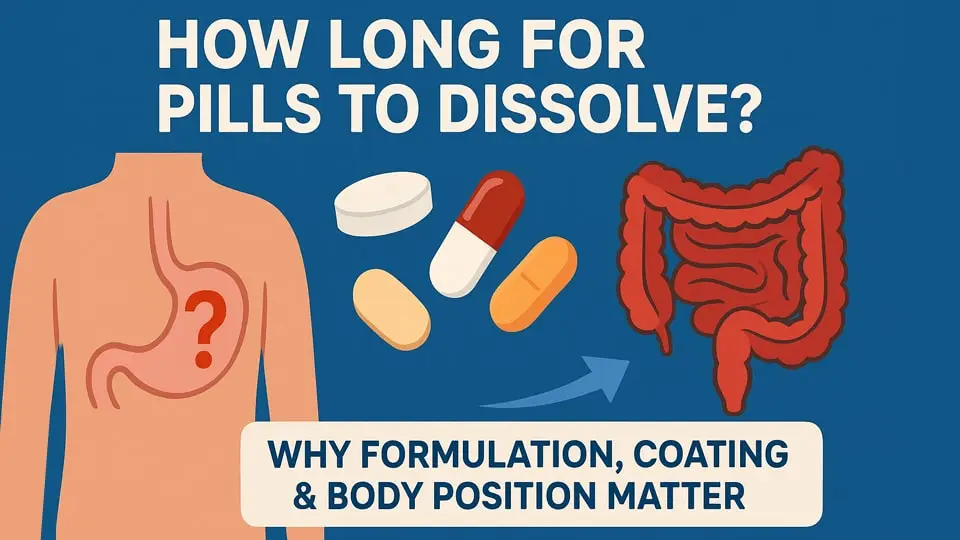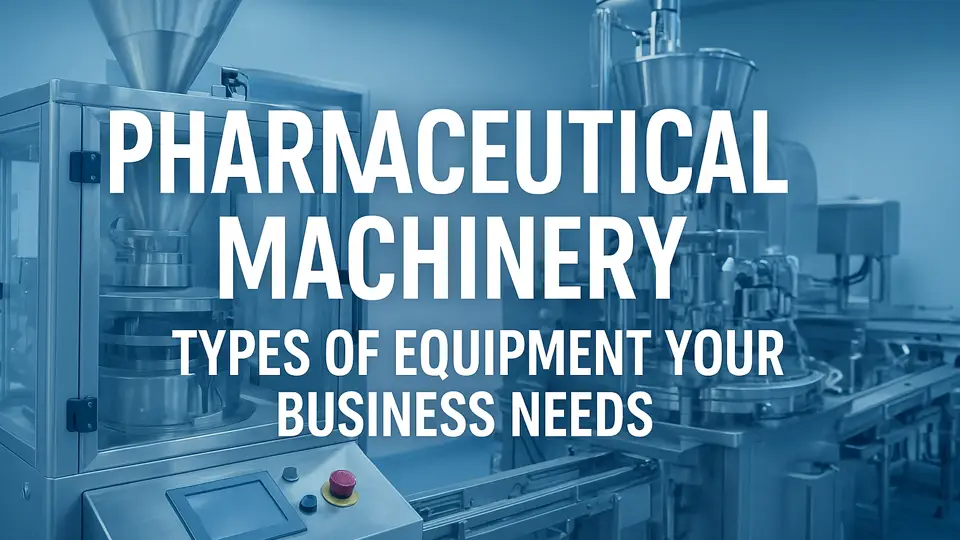
Have you ever struggled with inconsistent tablet quality and a sharp drop in productivity of your carefully selected tablet pressing machine after several months? You’re not alone. While many tablet press manufacturers attribute the declining quality and efficiency to the machine, the truth is, probably out of expectation, that the worn molds are the real culprits.
Whether it is a mini rotary tablet press machine for small runs, a laboratory tablet press for testing, or a big size tablet press machine for full-scale production, everything depends on the condition of the punches and dies. Once they begin to wear, powder flow becomes unstable, tablet weight drifts, and output drops. As Pharma Manufacturing reported in 2022, tooling replacement can account for 10 に 15 percent of maintenance costs, showing that even small wear can lead to big losses.
Understanding why punches and dies wear is the first step to protecting your tooling and keeping production smooth. この記事では, we’ll explore the main factors behind tablet press tooling wear and share practical tips to help extend the service life of the punches and dies.

In pharmaceutical and food production, mold wearing is considered normal, and few manufacturers using tablet making machines or candy tablet press machines pay attention to the hidden factors behind it. しかし, the complex pressing process and precision-engineered components make the causes of mold wearing diverse and complicated. According to experts and mold production companies, the main factors contributing to tablet press mold wearing are listed as follows:
These factors cover the punch and die materials, tablet materials, 手術, メンテナンス, and environment. To further explore the underlying mechanisms and grasp an in-depth understanding, this article will illustrate them respectively.
If we rank these factors, the quality of the punches and dies is probably the most vital one. In other words, material determines the mechanical limits of tooling. In both rotary tablet making machines and tablet presses for candy, the choice of material directly affects durability and performance.
Apart from the compatibility of the tooling, 硬度, roughness, 耐食性, impact resistance, and price are primarily taken into consideration when manufacturers select the punches and dies for their tablet press. A material performance comparison table is provided below.
テーブル 1 Comparison Between Three Common Used Tablet Press Materials
| Property/Material | D2 Tool Steel | 440C Stainless Steel | PM Steel |
| Hardness | ★★★★☆ | ★★★☆☆ | ★★★★★ |
| Toughness | ★★☆☆☆ | ★★★☆☆ | ★★★★☆ |
| Corrosion Resistance | ★☆☆☆☆ | ★★★★☆ | ★★☆☆☆ |
| Wear Resistance | ★★★★☆ | ★★★☆☆ | ★★★★★ |
| Price Level | ★☆☆☆☆ | ★★☆☆☆ | ★★★★★ |
| Overall Performance | 費用対効果の高い; standard choice | Balanced; good corrosion protection | Premium;long life for demanding use |
(Source: Natoli Engineering, I Holland Technical Data Sheets)
The punch and die materials most commonly used in tablet production are D2 tool steel, 440C stainless steel, and PM steel (PM 3V / ASP23). Each of these materials serves different purposes depending on the pharma pills press production requirements and working conditions.
全体, D2 is widely used for standard tablet press tooling, 440C is preferred when corrosion control is required, and PM steel stands as the premium choice for maximum mold wearing resistance and long-term performance.
In most cases, the surface condition of tablet press tooling, especially punches and dies, has a decisive impact on mold wearing and overall durability. Smooth, well-maintained surfaces minimize friction and sticking, while rough or damaged ones accelerate abrasion and reduce tool life, even the most advanced rotary tablet press will begin to show uneven wear and shorter tooling life. したがって, maintaining high-quality surfaces is essential to ensure stable and efficient tablet press performance.
One of the most effective ways to ensure this is by applying an appropriate coating. From health supplements to sweet candy pieces shaped by a tablet press for candy, smooth tooling and proper coating together helps reduce mold wearing, protect the tooling surface, and enhance tablet quality. Coatings minimize friction, prevent sticking, and improve resistance to wear and corrosion, thereby extending the overall service life of the punches and dies.

Since rough surfaces increase contact friction and powder adhesion, coating technologies are widely applied in tablet press tooling to reduce mold wearing and improve durability. The following shows the most commonly used coatings:
Different coatings vary significantly in hardness, 耐食性, 耐久性, そしてコスト. Here is a simple comparison table:
テーブル 2 Pros and Cons of the Three Common Used Tablet Press Materials
| コーティング | TiN | CrN | DLC |
| Pros | 高い硬度, 耐摩耗性; reduces friction; cost-effective | Good wear & 耐食性; 滑らかな表面 | Excellent wear & 耐食性; |
| 短所 | Limited corrosion resistance; | Slightly higher cost; shorter life under extreme wear | Higher cost; |
| Overall Performance | Good overall for general use; | Balanced choice for standard pharmaceutical and supplement production | Premium option for high-demand or high-moisture production; |
Building on the importance of punch coatings, Rich Packing offers high-quality tablet press tooling available with TiN, CrN, and DLC coatings. These tooling solutions are compatible with a variety of tablet press models, helping manufacturers achieve efficient and reliable production.
If your tablet press punches and dies could talk, it would have plenty to say about the powders it handles every day. Some blends are gentle, others cause trouble. How each formulation interacts with the tooling surface affects production stability and mold wear over time.
When producing vitamin C tablets on a pharma tablet making machine, acids can slowly erode punch surfaces, making them dull and unstable. A Natoli report shows uncoated punches may corrode within two weeks under acidic blends, leaving rust marks that signal early mold wear.
Lubricants like magnesium stearate form a thin shield for your pill or candy press tablet press machine, reducing friction and protecting tooling. But excess lubricant weakens tablets and causes capping. With proper balance, mold wearing is minimized and the high speed tablet press keeps running smoothly.
A tablet press performs best when all parts move in harmony. Once the punches and dies lose balance, even a high-precision pharmaceutical tablet press machine may face unexpected wear. Many operators assume that increasing compression boosts output, yet excessive force often leads to rapid punch fatigue and shortens tooling life.
In both pharma tablet making and nutraceutical production, maintaining proper pressure is vital. Studies show that overloading a rotary tablet press by just ten percent can cut tool life by nearly one-third. Stable compression not only protects tooling but also ensures consistent tablet weight and hardness.
A study by Elizabeth Carbide found that raising pressure by only ten percent can cut tool life by nearly one-third. Pushing too hard may boost output briefly, but in the long run it harms both tablet quality and tooling life.
Another hidden risk is misalignment. Even a slight deviation in a high-speed tablet press can cause uneven stress and chipped punch tips. Regular calibration and precise adjustment are therefore essential for every automatic tablet press machine, keeping the tablet press tooling in good condition and maintaining long-term production efficiency.
Imagine leaving a cold drink on your desk in summer. Tiny droplets quickly form on the glass. The same thing happens during tablet pressing when cool punches and dies meet warm, humid air. Moisture settles on the tooling, and over time, the surfaces lose their luster, rust appears, and wear speeds up. This is how humidity affects production.

Temperature changes make things worse. When the environment warms and cools repeatedly, the punch coating can weaken, allowing corrosion to develop.
Condensation is another hidden troublemaker. Whether using a tablet making machine for supplements or a candy tablet press machine for confectionery, keeping temperature and humidity steady helps protect the tooling and extend the life of the press tablet machine.
All the factors we discussed, from mold material and steel quality, surface treatments, tablet formulations, press parameters, alignment, to corrosion and environmental conditions, may seem minor alone. しかし, they quietly wear down tablet press tooling together over time.
The good news is that much of this wear is preventable. By following proper handling, storage, and maintenance practices, punches can stay smooth, friction can be reduced, and their service life can be significantly extended.
Extending punch life starts with proper handling, especially for any tablet press machine in your production line. If punches are left in a humid corner without trays or anti-rust coating, corrosion can silently start, reducing efficiency. Natoli highlights that proper storage can extend punch life by 25-35 percent.
Before every batch, inspect punches for wear or micro-cracks. Even a tiny scratch from leftover powder can damage hundreds of tablets during compression. Early inspections are essential for smooth production, whether you are making large-scale pharmaceutical tablets or running a small-scale pill making machine.
Re-polishing and re-coating can restore punches to optimal condition. Polishing smooths the surface, while re-coating adds a protective layer to prevent premature wear. 例えば, a tablet press for candy can benefit just as much from maintenance as a high-capacity effervescent tablet press machine used in vitamin production. European Pharmaceutical Review notes that re-coated punches can last 50 percent longer, making routine upkeep a cost-effective way to maintain performance.
Routine cleaning and lubrication after each run are crucial to prevent powder build-up and reduce abrasion. Skipping even a single batch can dull punches and shorten tooling life.
Operators using a mini tablet press often perform meticulous daily checks to maintain consistent tablet quality. Large-scale lines equipped with an automatic tablet press machine rely on scheduled maintenance to keep high-speed production running smoothly.
さらに, specialized equipment such as rotary pharma tablet press machines, vitamin tablet press machines, and candy tablet press machines benefit from regular cleaning to avoid cross-contamination, maintain tablet consistency, and extend overall machine life.

Punches are the heart of any tablet press, and even the strongest heart can fail if the environment is wrong. Moist air causes rust, temperature changes bend the parts, and dust leaves tiny scratches on the surface. 結果として, keeping punches in a clean, dry, and stable environment preserves their smooth finish and ensures every tablet is consistent and high quality.
Production lines using high speed rotary tablet press machines or mini rotary tablet press machines notice fewer defects and longer punch life. Even candy or effervescent tablet lines benefit from proper storage, reducing unexpected downtime and keeping output reliable.
ついに, tracking your tooling’s health pays off. Regular checks including punch length, tip wear, and die bore condition help you know what’s exactly going on. Digital tools and optical comparators monitor every punch and die in real time, helping tablet making machines stay in top shape. With predictive monitoring, teams can fix or replace parts before trouble starts, keeping production steady and costs down. For high capacity tablet press machines, this smart approach means less downtime, fewer defects, and smoother runs from batch to batch.
If you want to learn more about detailed solutions to extend the service life of molds, you can click here to refer to more information.
In tablet manufacturing, punches and dies are key to consistent quality and efficiency. 材料, surface treatment, press settings, and environment all affect tooling wear. Proper handling, メンテナンス, and intelligent equipment help prevent corrosion, reduce mold wearing, and keep production smooth.
Rich Packing recognizes these challenges and is committed to helping you protect your tooling, maintain tablet quality, and keep production running reliably, giving you peace of mind in your tablet pressing operations.
参考文献:


Learn what Alu-Alu blister packaging is, how it’s made, and why it provides unmatched moisture

錠剤の調合方法を学ぶ, コーティングや体の姿勢でさえ、持続期間に劇的な影響を与える可能性があります。
